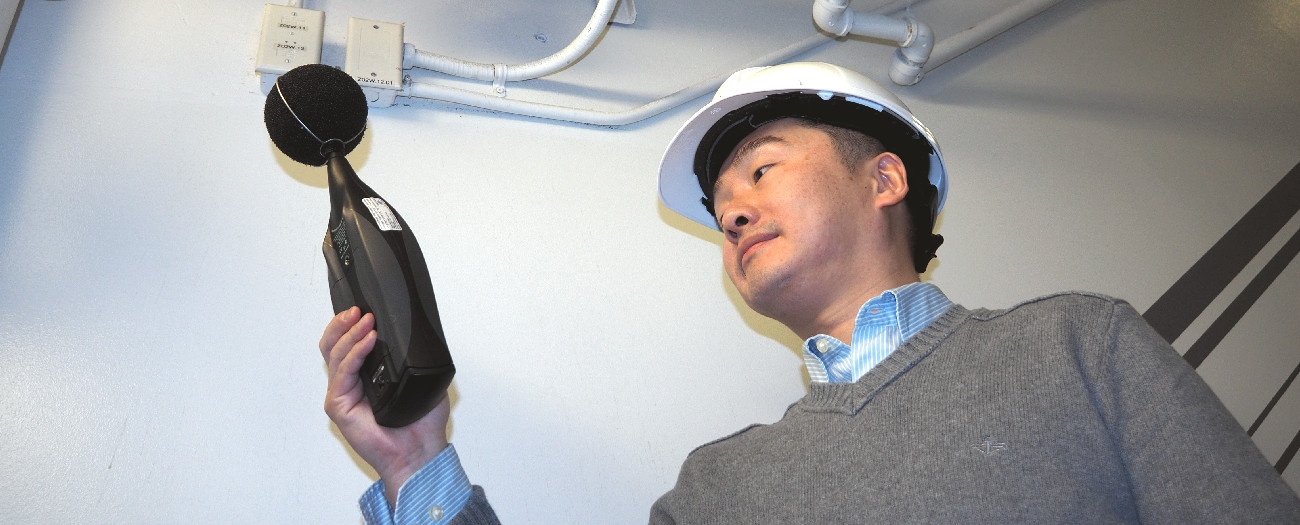AER requirements keep energy industry noise in check
Alberta - January 02, 2017If you’re in the noise business, what do you value most in your free time? Quiet.
“Overall I’m a sensitive guy, and I work on noise,” Jason Cao says with a smile. “When I’m not working, I really want to get away from noise and I try to stay in quiet places.”
As the Alberta Energy Regulator’s (AER’s) lone noise specialist, and one of only a handful in all of Alberta, Cao’s work life is all about noise—it’s his job to ensure that Albertans are protected from excessive noise from oil and gas facilities or operations.
What’s all the noise about?
While some noise is acceptable, the AER has clear requirements around how noise levels should be controlled.
“Most facilities and operations do emit some noise, but when people feel their lives are being interrupted by this noise, that’s when it can create problems,” says Cao.
Sound is measured in decibels. When sound levels are assessed to ensure they meet our requirements, the AER measures them in “A-weighted” decibels (dBA) and “C-weighted” decibels (dBC): dBA values account for the relative loudness of sounds in air as perceived by the human ear, while dBC is used to evaluate low-frequency content.
Operators must ensure that a facility’s noise level does not exceed the permissible sound level of 40 dBA, which is common in rural areas in Alberta.
“For context, sound levels near a busy highway or airport can measure above 85 dBA, while average levels in rural areas and agricultural land measure around 35 dBA,” says Cao. “When you’re in the shower you experience noise levels around 70 dBA, and a soft whisper is around 20 dBA.”
An operator must submit a noise impact assessment before applying to build a new facility or modify an existing one. This assessment identifies all the sound sources of the facility, outlines the operating conditions, and includes noise-level estimates and a noise management plan. Operators should also consider how effective their noise-control devices are and take regular sound-level readings.
What’s making noise?
Live on a busy street or next door to a do-it-yourselfer? Below are some examples of sound levels for everyday noises most of us experience.
Hand-held circular saw – 115 dBA
Power lawn mower – 92 dBA
Diesel Truck at 50 km per hour – 85 dBA
Passenger Car at 60 km per hour – 65 dBA
Conversation – 55 dBA
Source: Canadian Centre of Occupational Health and Safety
What we hear
The AER responds to all registered noise complaints, most of which are resolved by AER field centres located around the province. Cao says he receives an average of one or two complaints per month for a detailed technical review.
“The AER gets involved as a mediator if the resident and operator can’t resolve the issue. If our investigation finds that there’s a violation, we make sure the operator brings the noise levels into an acceptable range,” says Cao.
During an investigation, Cao visits the site to collect sound samples using a sound-level meter. Several samples or long-term measurements are taken into account for measurements that vary due to changes in the surrounding area caused by, for example, weather, interference from the atmosphere, and changing facility operations.
While drilling and hydraulic fracturing are temporary activities, they are among the noisiest. Cao says that operators can try to avoid drilling and fracking at night to reduce the impact on residents. At a typical permanent gas compression facility, engine exhaust, coolers, and building ventilation openings are usually the major noise contributors. Engine exhaust noise can be reduced by upgrading the exhaust muffler, and noise from coolers and building-ventilation openings are usually reduced by installing baffle silencers.
Back at home, Cao will don noise-cancelling headphones to drown out a bustling household. What kind does a noise specialist recommend? His favourite brand is Bose.
Kate Bowering, Writer


